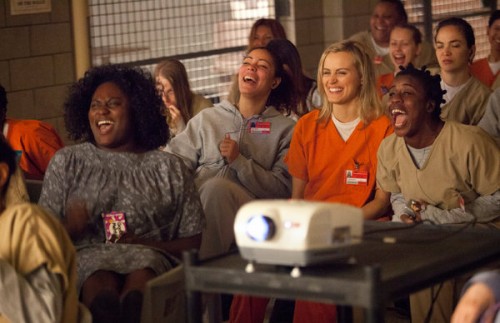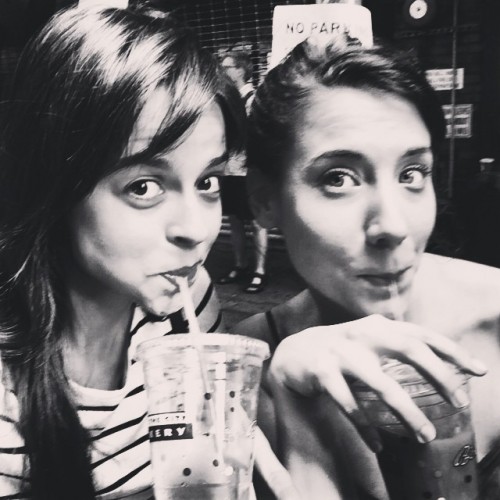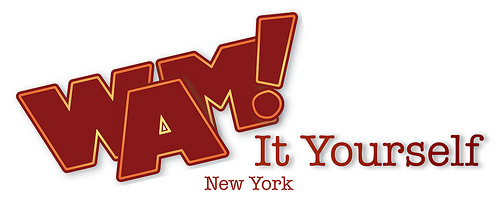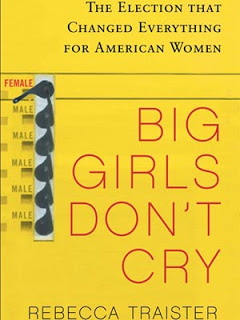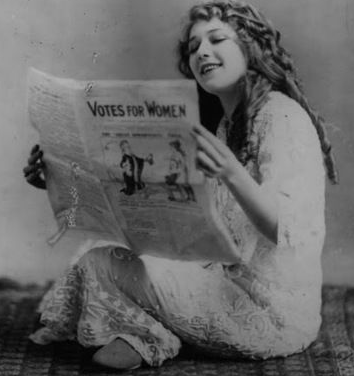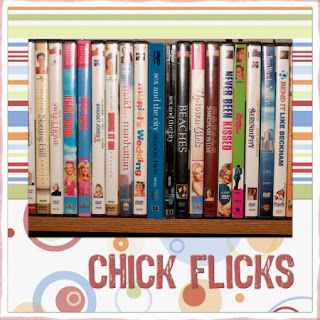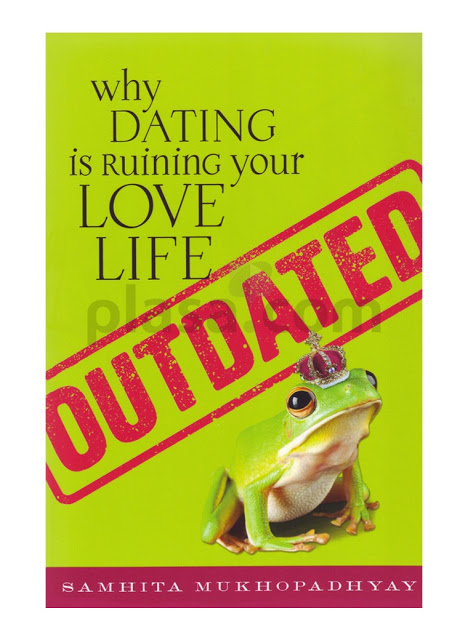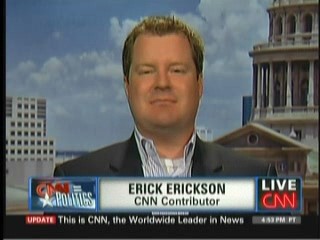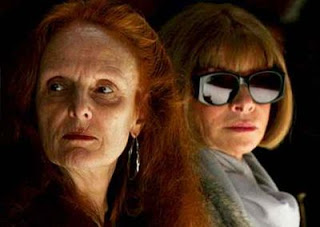This is a guest post by Carol Roscoe.
Last week, I was talking with some actors about the TV series we were currently binge-watching. One mentioned Orange is the New Black. (Full disclosure: I was the only one among us who hadn’t seen OITNB, yet.)
“Yeah, my girlfriend wanted me to watch it with her, but then I got totally into it.”
“You sound surprised by that,” I said.
“Totally,” he agreed. Before I could ask why, another actor at the table said, “My girlfriend is really into Orange but, eh. I was really put off by it.”
“What put you off?” I asked.
I was talking with a savvy actor-writer-director and was expecting something like: not believable, didn’t like the characters, didn’t like the writing. What he actually said took me by surprise. It was this:
“Well, the characters are all really fascinating. Compelling. Like, I want to know what happens to them and about where their stories will go and all. I mean each character is really interesting enough to get their own series.”
“But…”
“But, well, I just couldn’t identify with them. I mean, all the characters are women. You just don’t see that.”

“No,” I said, “you don’t.”
“Right?” he continued, “I mean, imagine trying to watch a show where nobody reflected your experience.” (Oh, one more disclosure: I was the only woman at the table.)
“Because they are all in prison?” I asked, just in case I misunderstood him.
“No, because….you do know the premise of the show right? It’s all women.”

“I’d heard that.”
“That’s just really hard for me to connect to.”
“So it’s really disconcerting to see a story about so many people who, well, aren’t like you. I mean, gender-wise.”
“Yeah, exactly,” he said.
I nodded, trying to figure out exactly what kind of conversation I was interested in having.
“I have total compassion for you,” I said, “I know exactly what you mean.”
He looked doubtful, so I continued. I shared how my life had been plagued by the same experience. Everywhere were stories that focused on people of that other gender; books, TV, plays, movies seemed to hinge on the experience of people who, in fact, were not female. It was weird, I confessed, disorienting and disheartening. As an actor alone, that had a limiting effect on the number or roles available in a season, in theater or film. You could look it up, only 30 percent of speaking roles in film were female characters. In theater, especially classical theater, this disparity was even greater, at times male characters outnumbering females 14 to one.
“Our show’s different,” he said, proudly.
“Yes,” I agreed. “Out of five roles, one is female. We are achieving a 20 percent representation of half the world’s population.”

“Look,” I added before he could explain how that was good, “I empathize with you. It can be a real challenge, seeing stories about people who aren’t like you. It can feel disconcerting, even marginalizing. Perhaps, though, and I can only suggest this based on my own experience, perhaps one might encounter the story as a human story, irrespective of gender. One might even investigate the difference or similarity between experiences. One might expand one’s awareness, one’s compassion, and get to experience what life is like for another person. There just might be value in that.”
He was silent for a while. Maybe he was wondering what kind of conversation he wanted to be having. After a moment he said, “Right.”
But, I was thinking about other things, like: why bother? Why be an actor? Why work that hard, for that little, in order to play a mind-boggling narrow range of roles? And for an audience made up of people who weren’t interested in anything they didn’t already know?
I got to thinking about my next project, the story of a whistleblower. In researching people who have come forward with state or corporate secrets I was struck by by how many were driven by a sense of fairness to break their code of silence. Each saw injustice, irresponsible and/or criminal acts occurring; each chose to step forward, risk their career (their lives) to act for the common good. For the whole of humanity. Not just a part of it.
We live on a planet, populated, in near-equal parts, by males and females. We move about the world, where (in our country at least), the work-force is again, split right down the middle. We all come from families, where, at least for nine months of our existence, we were held within the experience of a woman. Our first connection to another human, a literal connection which formed and fed us, was with a woman. But, you just don’t see that. Once in the world, our art and culture belie that experience. The populations in TV, in film (maybe all arts and culture), tilts strangely in one direction. It is disorienting. Disorienting because it is a lie. I don’t think art is a place for lies. I think, it’s the place for truth-tellers. For whistleblowers.
I empathize with that young man’s distress. But, I’m not interested in lying to him. Or to our audiences. How do we move from misrepresentation–no, how do we move from lying about the world to telling the truth? To breaking the silence about the injustice, disregard and dehumanizing aspects of our culture? Of our industry? How do we continue that conversation when the punishment for whistleblowers is so clear?
I’d be lying if I said I have the answer. Well, other than the obvious one. Keep having the conversation. Keep doing the work. Choose meaningful work. Create meaningful work. Work with as little misrepresentation as possible and hope that it will connect to someone. Hope that the work reaches someone across the gulf of whatever divide and offers a tiny glimpse of what life is like on the other side.

Carol Roscoe makes her home in the wilds of the Pacific Northwest where she teaches, acts, directs, and writes. Film work includes West of Redemption, Gamers:Dorkness Rising, Gamers: Hands of Fate, The Dark Horse, and The Whole Truth, and others. Her latest film, If There’s a Hell Below, will be released early next year. She has appeared on stages in Seattle, London, New York, Washington DC, Chicago, Tucson and Pheonix.
